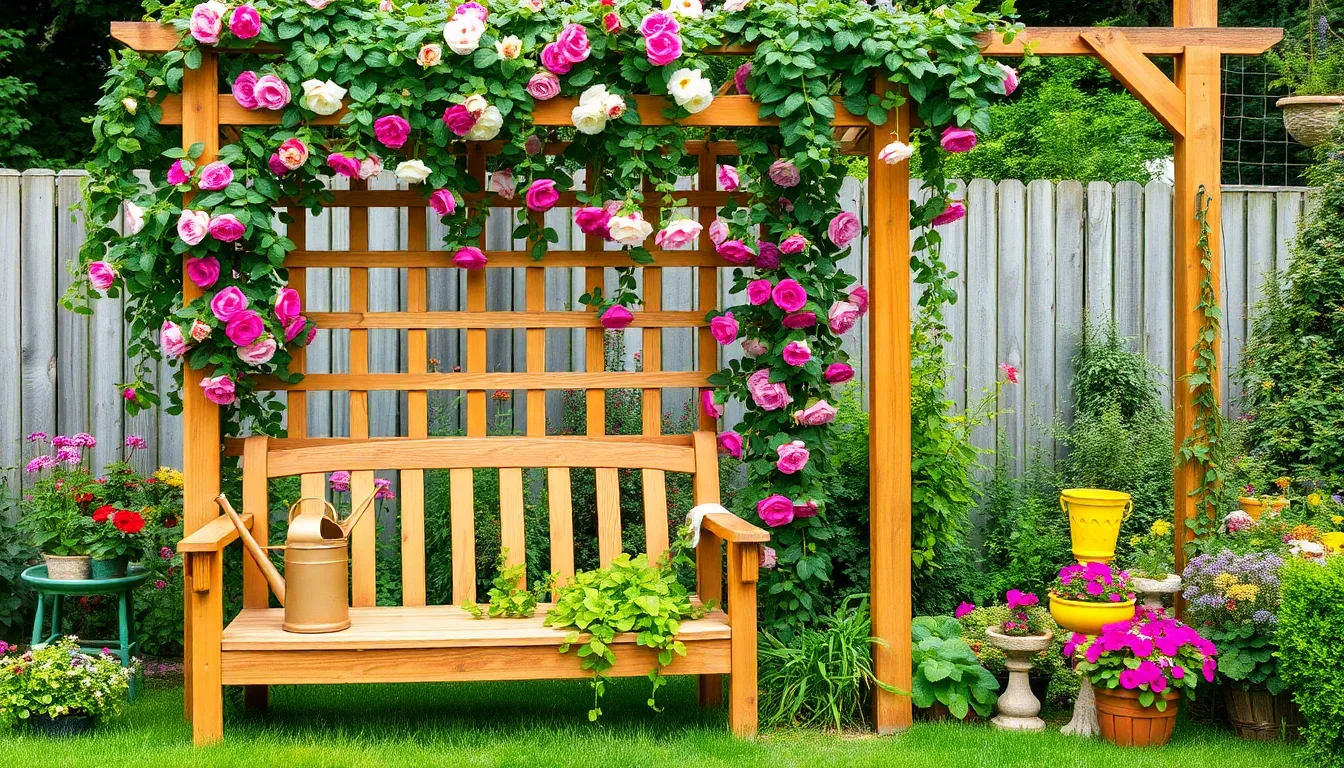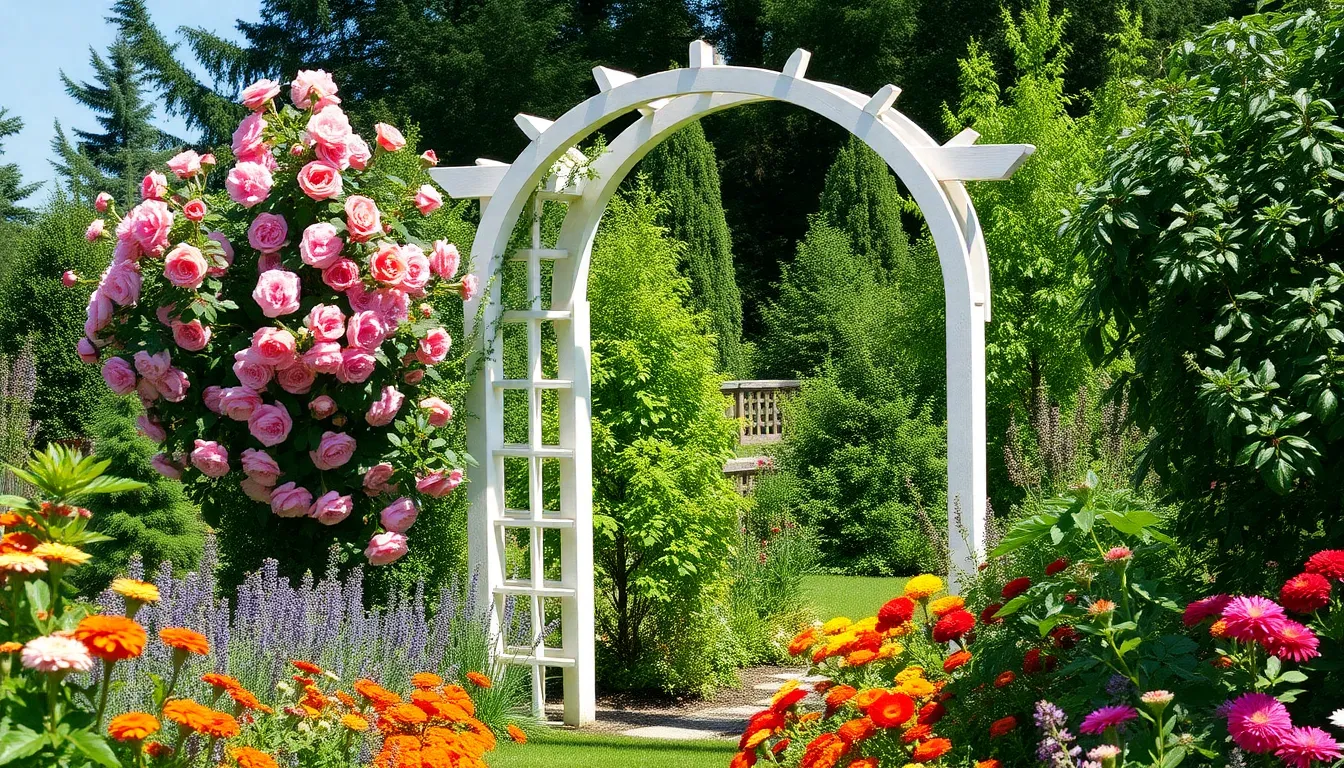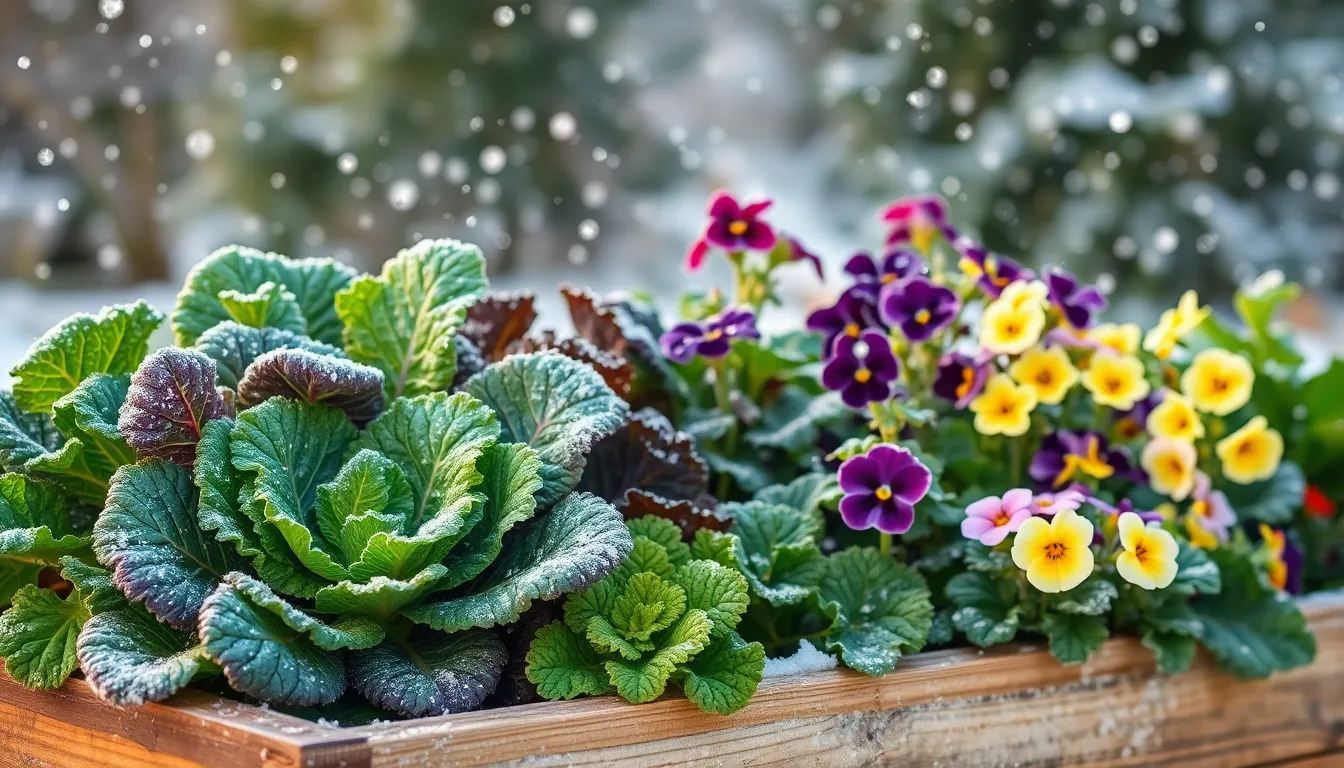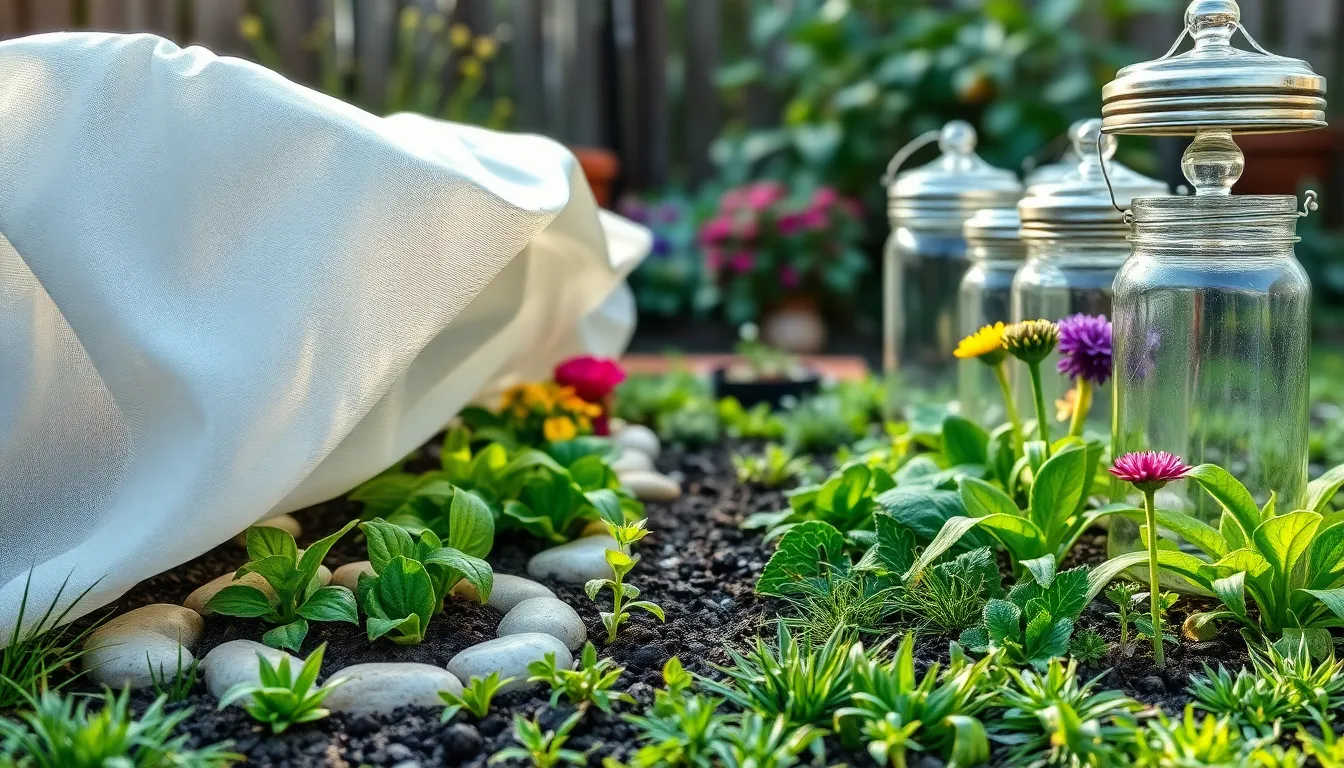A garden trellis is more than just a decorative addition—it’s a transformative tool that can elevate your gardening experience. For both the novice gardener eager to learn and the seasoned green thumb looking to optimize their space, a trellis offers both beauty and practicality that can redefine your outdoor sanctuary.
Imagine your climbing plants reaching new heights, their vibrant foliage and blooms showcased to their fullest potential. With a trellis, you gain the ability to maximize your vertical space, a particularly valuable asset for those with limited garden area.
In this article, you’ll discover the myriad benefits of incorporating a trellis into your garden, from supporting and training your plants to enhancing airflow and sunlight exposure. We’ll guide you through selecting the right trellis for your needs and share tips on installation and maintenance, ensuring your garden thrives. Whether you’re looking to add structure or simply find a new way to express your gardening creativity, the timeless charm of a garden trellis awaits.
Benefits of a Garden Trellis
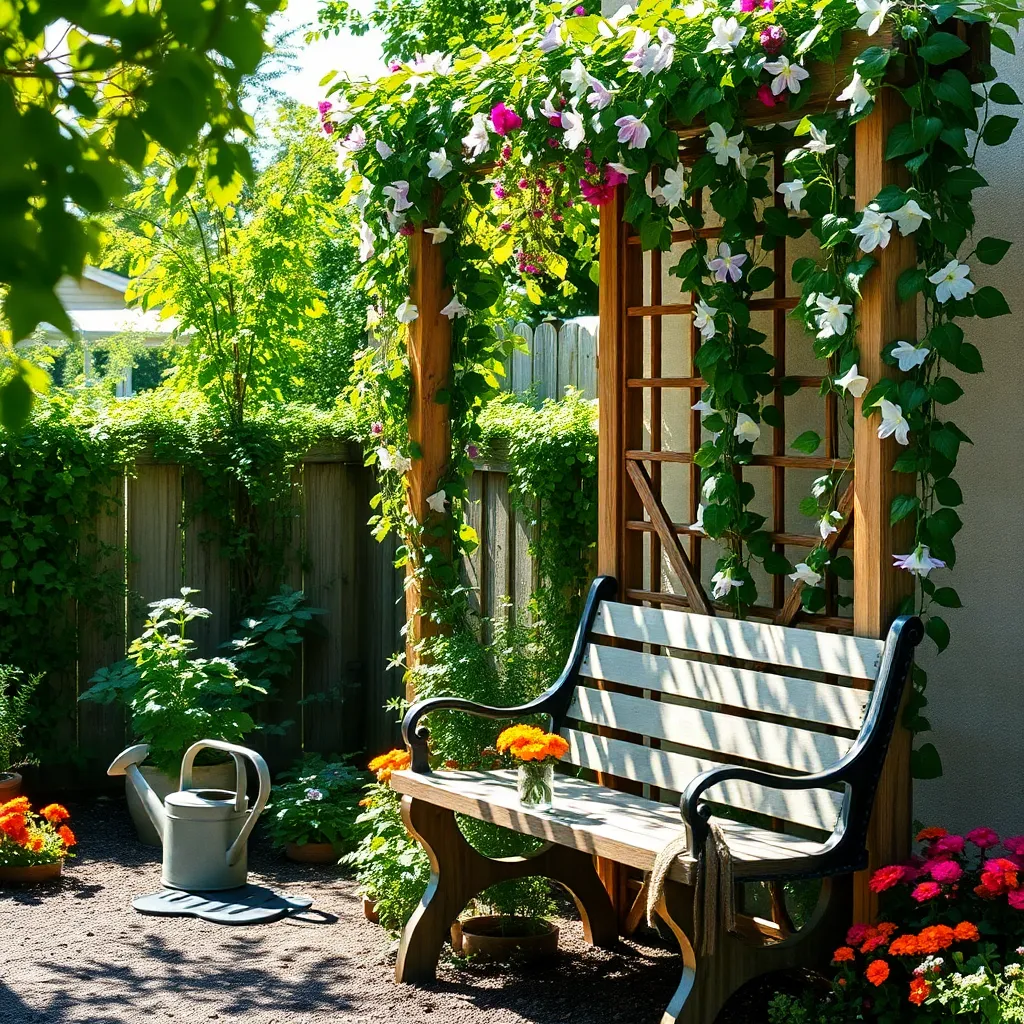
Installing a garden trellis offers numerous benefits, particularly for vertical gardening enthusiasts. By using a trellis, you can effectively maximize your garden space, allowing you to grow more plants in a limited area.
Moreover, trellises provide essential support for climbing plants like peas, beans, and tomatoes, which need vertical structures to thrive. This support helps prevent plant damage and improves airflow, reducing the risk of diseases caused by poor air circulation.
For those growing flowering vines such as clematis or morning glories, trellises can enhance the aesthetic appeal of your garden. These structures not only elevate blooms to eye level but also create stunning visual focal points.
Advanced gardeners can utilize trellises to manipulate sunlight exposure, ensuring plants receive optimal light throughout the day. Position the trellis strategically to shade certain plants during the hottest parts of the day, which can be especially beneficial during summer months.
Enhancing Plant Growth Vertically
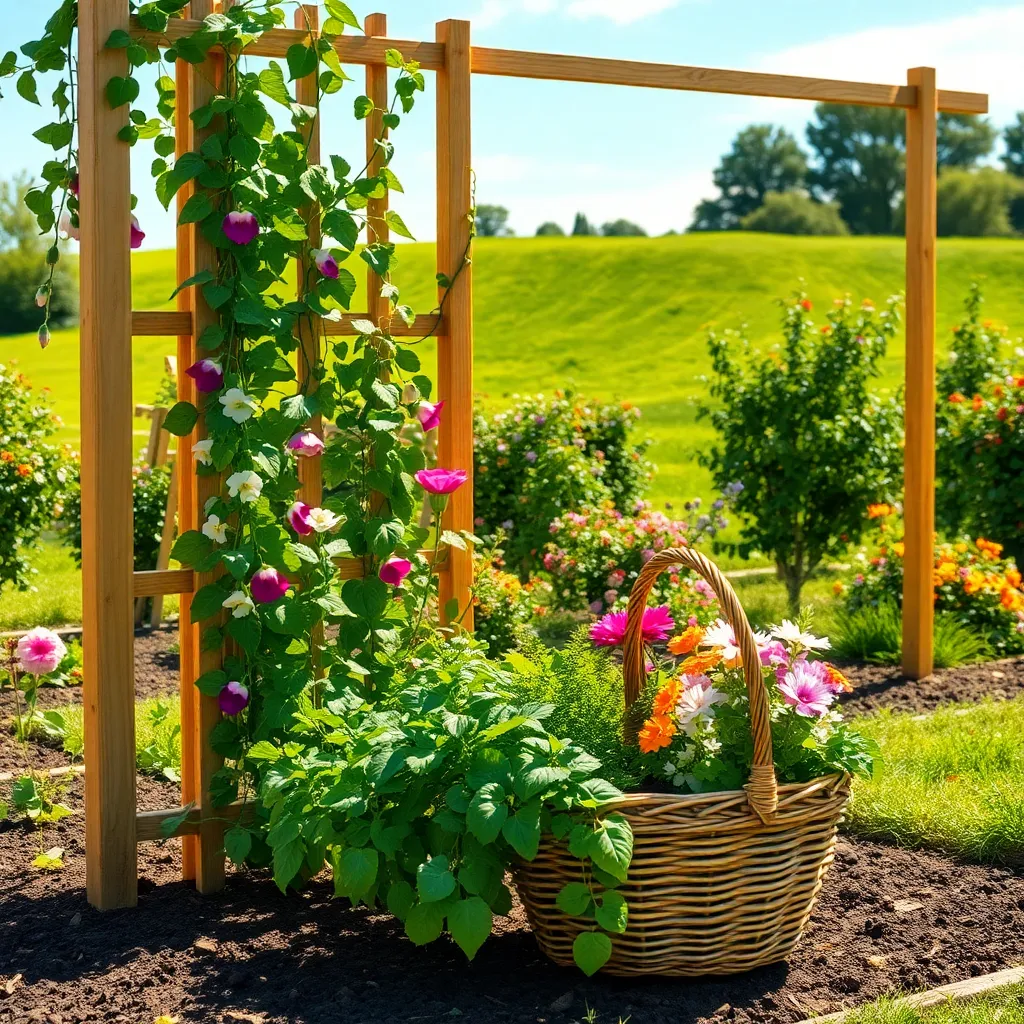
Vertical gardening using a trellis can significantly enhance plant growth by maximizing space and promoting better air circulation. With increased air flow, plants are less prone to diseases such as mildew and rot, which thrive in damp, overcrowded conditions.
For those new to gardening, starting with climbers like peas and beans is a great choice. These plants naturally seek vertical support, making a trellis an ideal structure to guide their growth.
When setting up your trellis, ensure it’s sturdy and anchored well into the soil to support the weight of mature plants. Use materials like metal or treated wood to withstand weather conditions and provide long-term support.
Experienced gardeners can experiment with advanced trellising techniques, such as espalier, where fruit trees are trained to grow flat against a wall or trellis. This not only saves space but can also increase fruit production due to improved sunlight exposure.
For optimal growth, ensure that the soil is rich in organic matter and well-drained. Regularly check the soil moisture level, especially for trellised plants, as they may dry out faster due to increased exposure to sun and wind.
Maximizing Space with Trellises
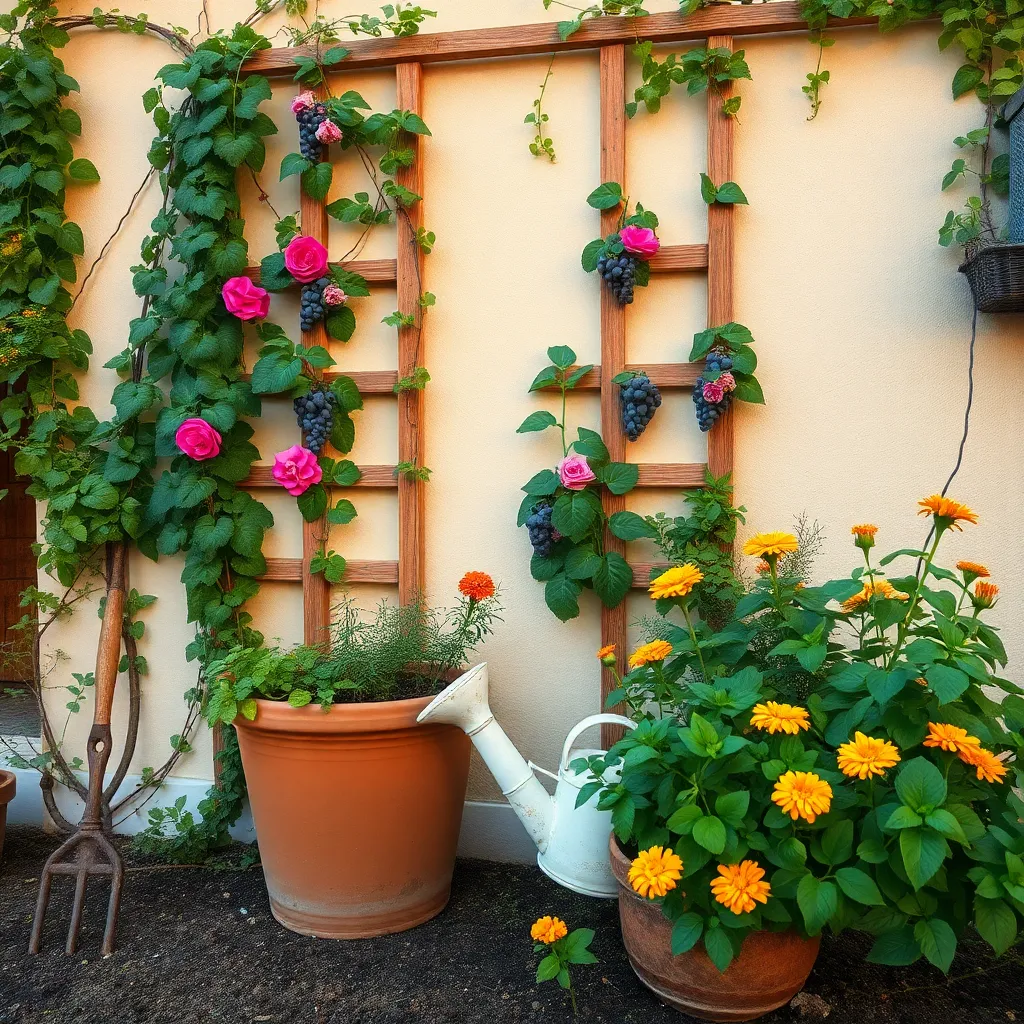
Using trellises in your garden is an excellent way to maximize limited space. They allow you to grow vertically, freeing up ground space for other plants and increasing your overall planting area.
Consider using trellises for vining plants like cucumbers, peas, and tomatoes, which naturally climb and thrive when given vertical support. Not only does this improve air circulation around the plants, reducing disease risks, but it also makes harvesting easier and more enjoyable.
For beginners, starting with a simple A-frame or obelisk trellis can be a great choice. These structures are easy to install and can be made from affordable materials like bamboo, metal, or recycled wood, ensuring that even novice gardeners can create a functional vertical garden.
Advanced gardeners might experiment with espalier techniques, which involve training fruit trees to grow flat against a trellis. This method not only optimizes space but also enhances fruit production by improving light exposure and air circulation.
When installing a trellis, ensure it is secure and sturdy enough to support the weight of mature plants, especially in windy conditions. Regularly check the ties and supports to make sure they don’t damage the stems as plants grow and adjust them as necessary.
Aesthetic Appeal of Trellised Gardens
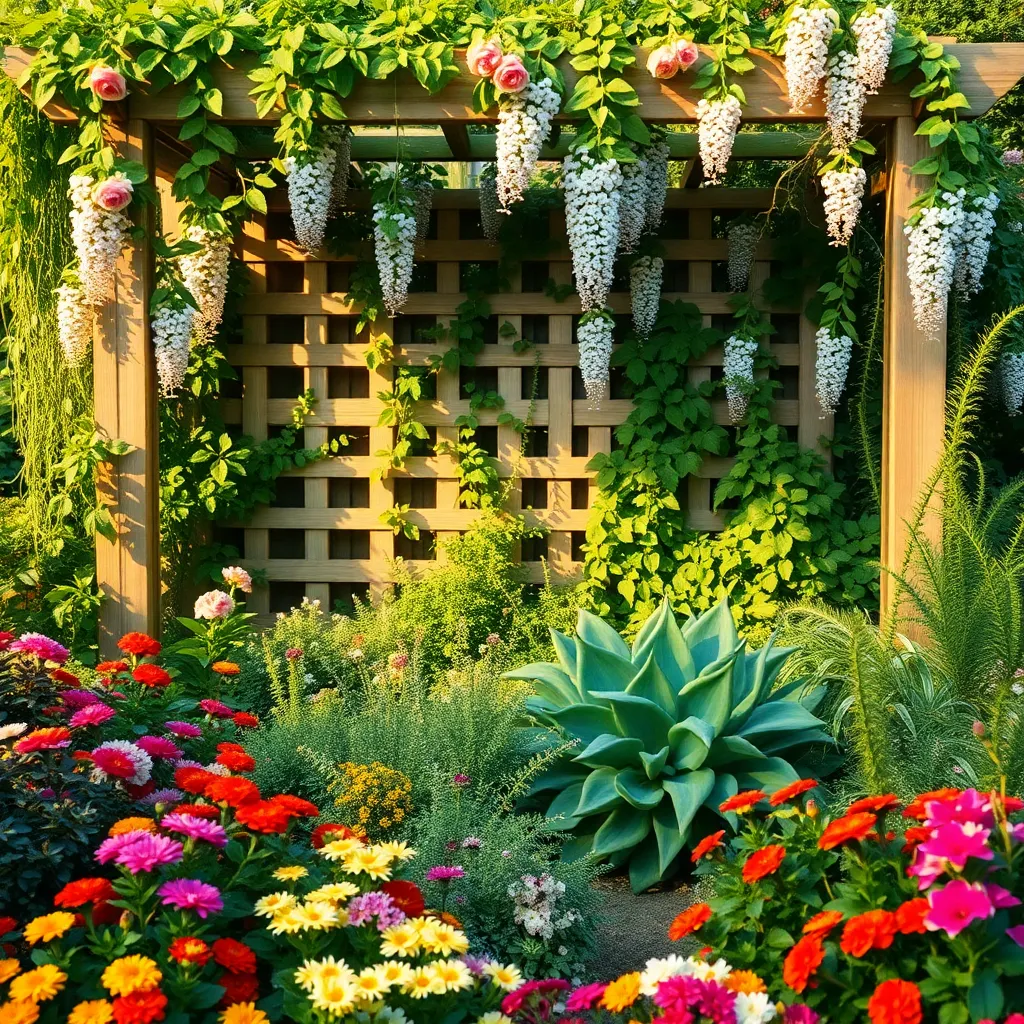
Incorporating a trellis into your garden design can significantly enhance its aesthetic appeal. By adding vertical structures, you introduce a new dimension that draws the eye upward, creating a sense of depth and interest in your space.
Choose climbing plants like clematis or jasmine to adorn your trellis, as their vibrant blooms and lush foliage create a stunning visual impact. These plants not only provide beauty but also attract pollinators like bees and butterflies, contributing to a healthy garden ecosystem.
For a more advanced approach, consider training fruit-bearing plants like grapevines or passionfruit on your trellis. This method not only beautifies your garden but also offers the practical benefit of a bountiful harvest when properly maintained with adequate sunlight and regular pruning.
When selecting a location for your trellis, ensure it receives the proper amount of sunlight based on the plants you choose. Most flowering vines thrive in full sun, needing at least six hours of sunlight daily to flourish.
Choosing the Right Trellis Material
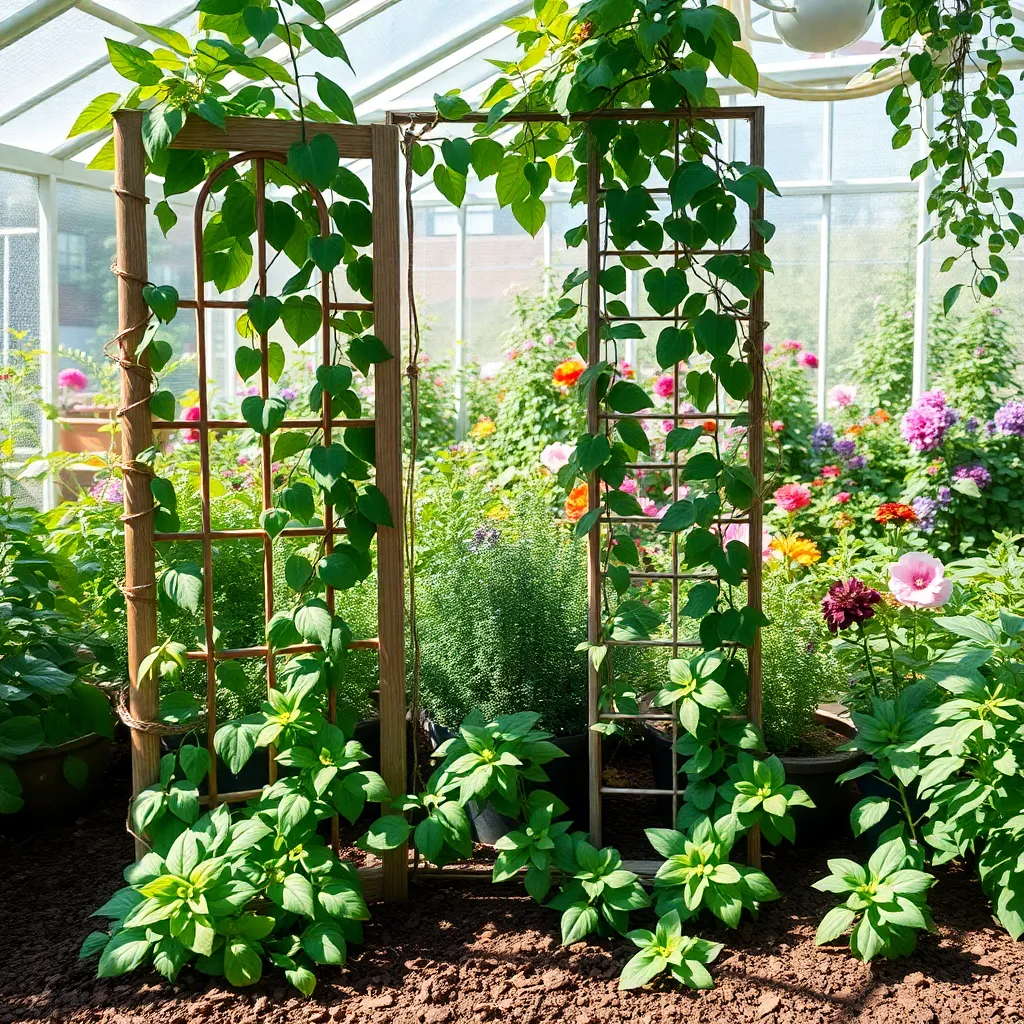
Choosing the right trellis material is essential for both the aesthetics and functionality of your garden. Wood, metal, and plastic are common options, each with unique benefits and drawbacks.
Wooden trellises offer a natural look and blend seamlessly with most garden designs. However, they require regular maintenance, such as sealing or painting, to prevent rot and extend their lifespan.
Metal trellises are known for their durability and strength, making them ideal for supporting heavy or vigorous climbing plants. Keep in mind that metal can heat up in direct sunlight, which might affect delicate plants, so choose a location wisely.
For a low-maintenance option, plastic trellises can be a practical choice. They are resistant to weather conditions and do not require treatments like wood does, but tend to have a less natural appearance.
When selecting a material, consider the specific needs of your plants and the overall design of your garden. Heavy climbers like wisteria or grapevines may need the robust support of metal, whereas lightweight annuals can thrive on plastic.
Ensure the trellis is securely anchored to withstand wind and the weight of mature plants. This stability is critical for preventing any damage to both the trellis and plants during adverse weather conditions.
Conclusion: Growing Success with These Plants
In summary, this article has explored five key relationship concepts through the metaphor of installing a garden trellis. First, we discussed the importance of providing support for growth, just like a trellis does for climbing plants. Second, we emphasized the need for boundaries and structure to nurture healthy relationships. Third, we highlighted the significance of creating a shared vision, akin to designing a garden layout. Fourth, we explored the value of resilience and flexibility, ensuring relationships can weather the seasons of change. Finally, we recognized the necessity of consistent care and attention, much like tending to a garden.
As an immediate next step, consider applying one of these concepts in your relationship today—perhaps by initiating a conversation about shared goals or setting aside time for nurturing connection.
We encourage you to save or bookmark this article as a handy reference to revisit these concepts, ensuring your relationship continues to flourish. Remember, successful relationships are built on intentional actions and ongoing care. By investing time and effort now, you’re planting the seeds for a rewarding future together. Embrace this journey with optimism and watch your relationship bloom.

